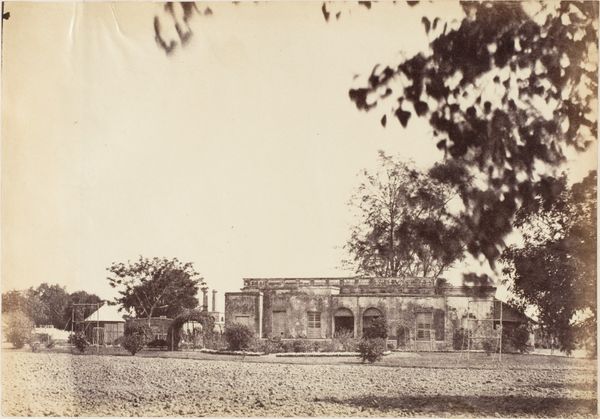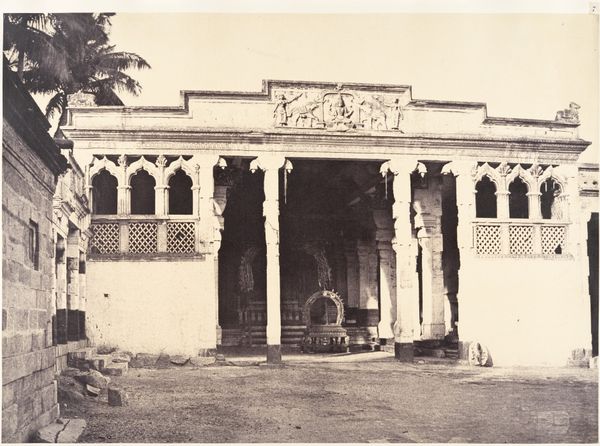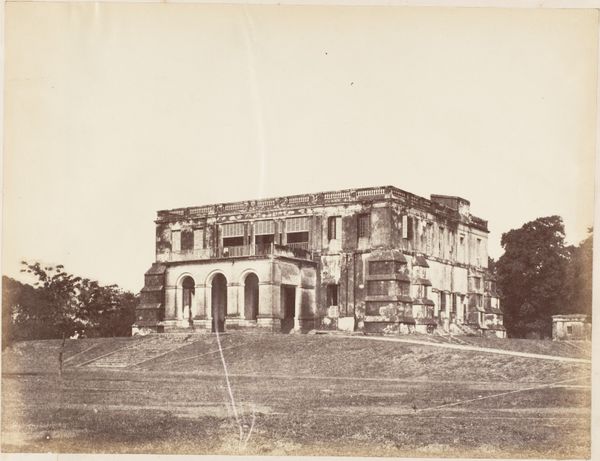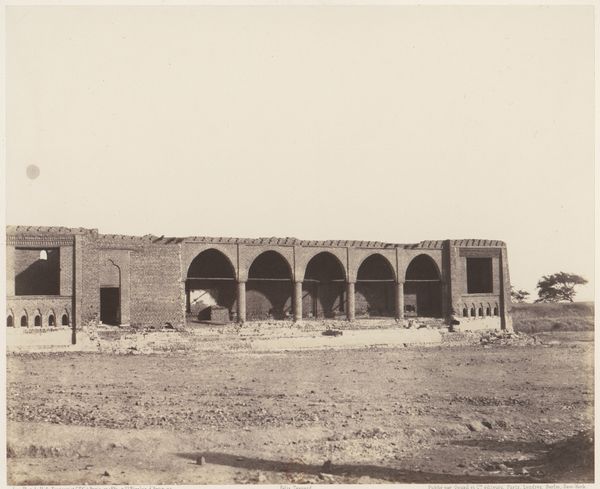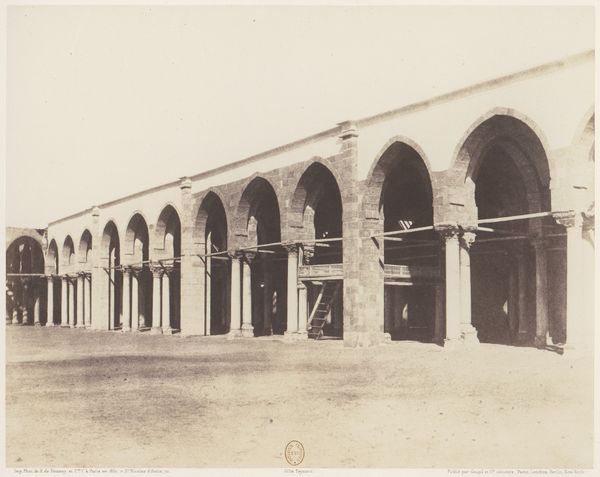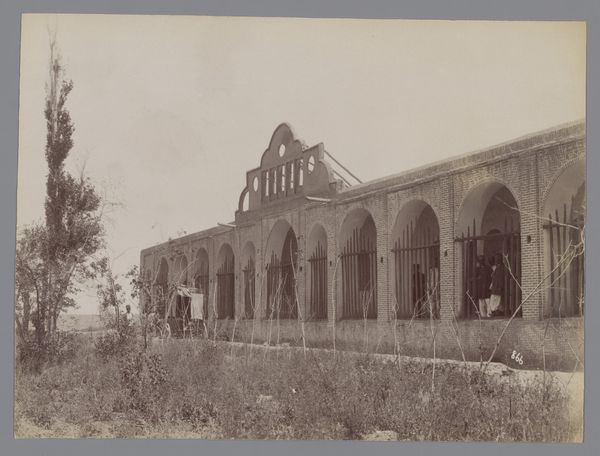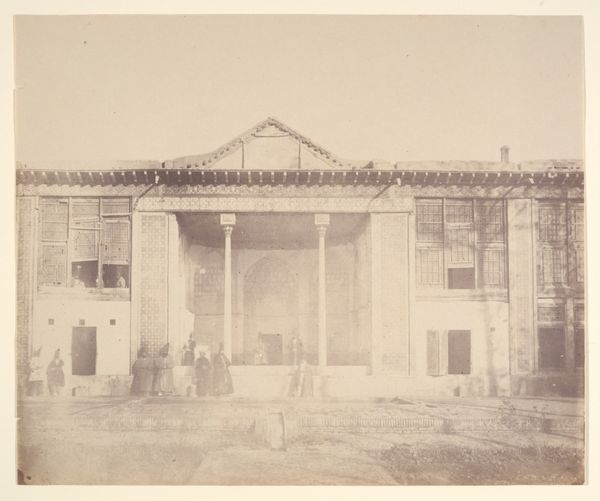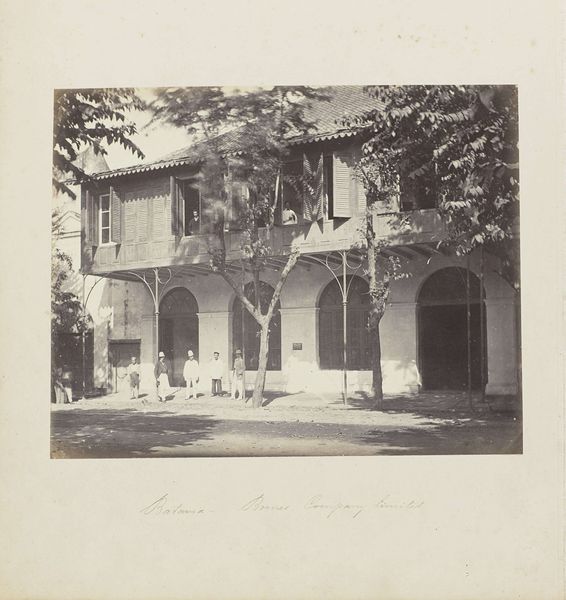
daguerreotype, photography, architecture
#
landscape
#
daguerreotype
#
photography
#
historical photography
#
islamic-art
#
architecture
Copyright: Public Domain
Luigi Pesce created this albumen print of the Outer Entrance to the King's Palace in Teheran sometime in the mid-19th century. The photograph presents a fascinating intersection of cultures and technologies. As European photography began to circulate globally, it shaped the visual understanding of foreign lands. The image of the palace, with its covered windows and muted tones, may evoke a sense of mystery. But we should consider how the photographer's cultural background and the technical limitations of early photography influenced this depiction. Was this aesthetic an attempt to convey an orientalist fantasy to a Western audience? Or was it intended as a simple record of the Palace? To truly understand Pesce's photograph, we need to delve into the visual culture of 19th-century Iran, and also understand the social and institutional conditions that allowed photographs like this to be produced, circulated, and preserved. What was the role of photography in documenting and shaping perceptions of power and place? Exploring these questions allows us to see this image as more than just a photograph, but also as a cultural artifact.
Comments
No comments
Be the first to comment and join the conversation on the ultimate creative platform.
